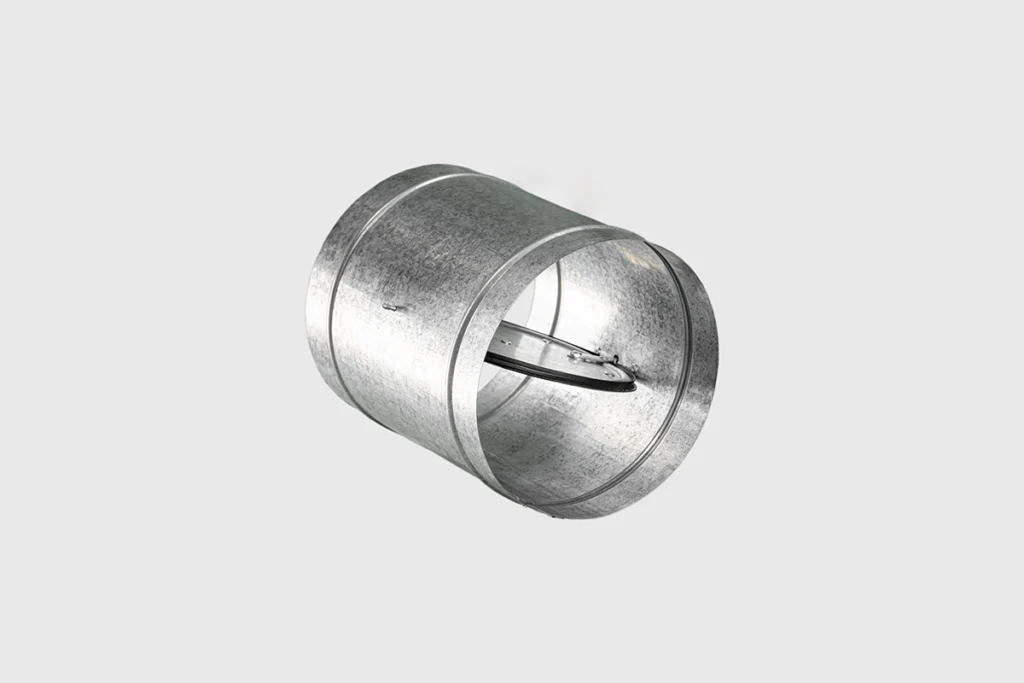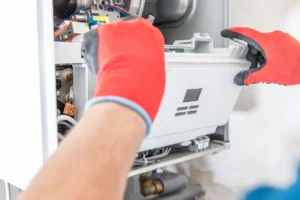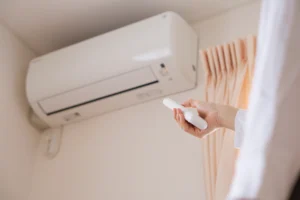Most folks never think about what’s inside their ductwork. They set the thermostat, hear the system kick on, and expect every room to feel the same. But if you’ve ever walked from one room that’s freezing to another that feels stuffy, the problem might not be your furnace or AC at all—it might be your dampers.
So, What Are Dampers Anyway?
Think of dampers like little gates tucked inside your ducts. When they’re open, air moves freely. When they’re closed or partly shut, less air makes it through. They’re not big or flashy, but they decide where your heated or cooled air goes.
I usually explain it this way: if you’ve got one room that’s always warmer, you might just need the damper in that duct opened a bit wider. It’s a simple adjustment, but it can make a big difference.
If you’d like a technical dive into how duct systems impact airflow and efficiency, the Department of Energy’s guide on minimizing energy losses in ducts is a great resource.
Why Do Dampers Matter?
Here’s the deal—without working dampers, your HVAC system sends air wherever it wants. That means one room could be an icebox while another never cools down.
A few reasons they matter:
They balance airflow so every space feels more even.
They save energy by steering less air into unused rooms.
They keep your equipment from working harder than it needs to.
I’ve had homeowners call convinced their AC was failing, when really it was just a damper set wrong.
The Two Main Types of Dampers
You’ll usually run into one of two kinds:
Manual Dampers
These are the simple ones. There’s a little lever on the duct. Turn it, and you open or close the plate inside. A lot of older homes have them, and they still work fine—you just need to adjust them once in a while.
Automatic Dampers
These do the work for you. They’re hooked up to motors and respond to your thermostat or zoning system. Say your upstairs is warmer in summer—automatic dampers open up those ducts while closing off areas that don’t need it. It’s a smarter way to keep temps balanced.
Curious about zoning systems in general? Energy.gov explains how ductless and multi-split systems can be used for zoning.
Problems We See with Dampers
Like anything mechanical, dampers don’t last forever. Here are some common issues we run into:
They get stuck open or closed from dust or wear.
Seals loosen, letting air leak out.
In automatic versions, the small motor can burn out.
Sometimes they’re just adjusted wrong, which throws the whole system off.
When that happens, you usually notice rooms that never match the thermostat—or energy bills creeping higher.
Signs You Might Have a Damper Issue
Wondering if this could be your problem? Look for these:
One bedroom is always hot while the others are fine.
You hear whistling or rattling in your ductwork.
The system seems to run forever without catching up.
Your utility bills jump even though your habits haven’t changed.
If that sounds familiar, it’s worth having someone check your dampers before assuming the worst.
How We Adjust Airflow During Service
On a maintenance call, we don’t just look at the furnace or AC—we also check the dampers. For manual ones, we make sure the handles move easily and the plate inside isn’t stuck. For automatic versions, we test the motor and wiring to see if it responds when the thermostat calls for it.
A lot of times, a simple adjustment or cleaning brings airflow back into balance. It’s not as dramatic as replacing a furnace, but homeowners notice the comfort difference right away.
If you like the technical side of things, the University of Illinois Smart Energy Design Assistance Center has a solid guide that talks about airflow management and load calculations.
Saving Money With Balanced Airflow
Comfort is the obvious reason to care about dampers, but they also help your wallet. When airflow is balanced, the system doesn’t have to overwork. That means less energy used, fewer breakdowns, and a system that lasts longer.
I’ve seen homes where just adjusting or fixing a damper cut down on energy bills noticeably. It’s one of those behind-the-scenes things that pays off in the long run.
Wrapping It Up
Your furnace or AC may get the spotlight, but the small parts tucked inside your ducts are just as important. Dampers keep airflow balanced, comfort steady, and energy use under control.
At Sub Zero Temp Control, we’ve helped plenty of homeowners who were frustrated with uneven heating or cooling—only to find the dampers were the real culprit. We’re proud to provide expert HVAC service for homeowners in Vancouver, WA, and the surrounding areas—so your comfort is always in good hands. If you’re dealing with hot and cold spots or just want a system check, let us take a look. Contact us today and we’ll make sure your airflow is set up for comfort and efficiency.
Read Next: How Do I Know If I Have a Heat Pump? Simple Ways to Tell






